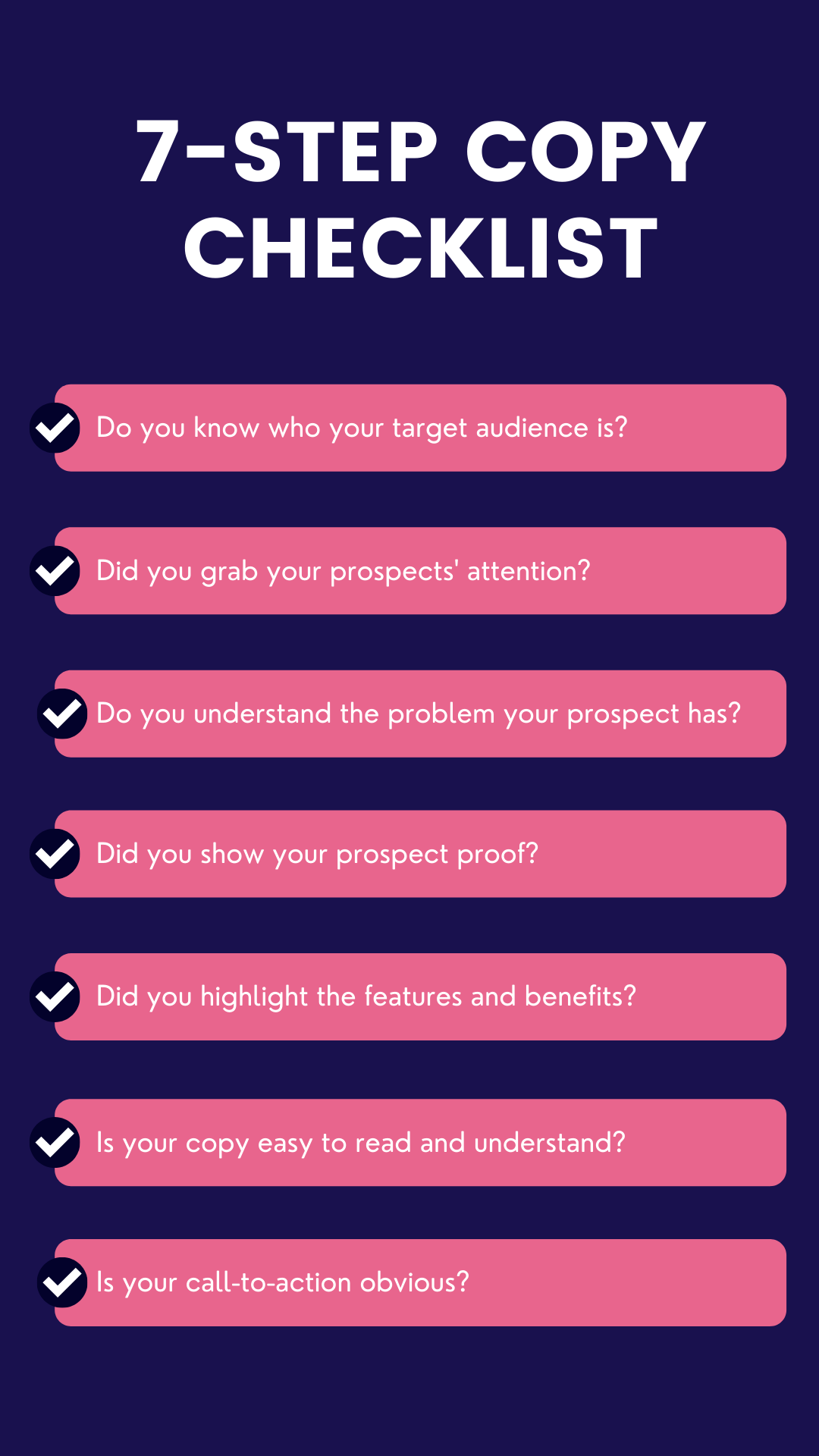7-Step Ad Copy Checklist
Think of ad copy like a text version of a salesperson. Every word, phrase, and piece of punctuation used will be chosen for a specific purpose. Maybe it’s to add credibility early on in the sales pitch. Maybe it’s to pinpoint a specific need or desire held by the target customer.
If you can improve the effectiveness of your copy, you’ll generate more leads and sales.
To ensure that marketing agencies tackle this task with confidence, our team has shared a list of best practices that you need to ask yourself when writing copy.
Who are you After?
Before you write a word of copy, get a clear idea of your target audience.
You might be imagining a crowd of people, but instead, picture a single person that represents your target audience. In your copy, you’ll want to try and mimic the style and tone you’d use if you were speaking to this person one-on-one.
Your language should be conversational and it’s helpful to use the word ‘you’ so that you’re speaking directly to your audience.
Grab Some Attention
Now that you’ve determined who you’re speaking to, it’s time to grab their attention!
Your headline (for Google Ads) is typically where you want to convey the BIGGEST benefit your prospect is most interested in. An attention-grabbing headline pushes your reader to want to learn more and ultimately determines whether or not the reader absorbs the rest of the ad. Headlines can be anything from a question to a limited offer—whatever route you go, just make sure you’re speaking to your audience.
Be a Problem Solver
This is where you let your prospect know that whatever problem they may have, you have the best solution. Identifying what problem your prospect has may take a little bit of time and research—but once you pinpoint their pain point, capitalize on the emotions your prospect is feeling when writing your copy. But don’t linger too long—you’ll need to offer a solution!
Implementing a problem-solution lead is a common way to offer up your solution (aka your product). We often use the “If this then that” approach. For example: For relief of [problem] try using [product] for fast results. Obviously this is just a really basic example, but you get the idea!
The Proof is in the Pudding
It’s important to provide proof that you and your product are legitimate and you have a track record of getting results. Testimonials and reviews work well here, as well as certifications and press mentions. This is the part where you get to brag a little!
All the Bells and Whistles
Your product is unique, so now is the time to share all those cool features and benefits. Remember to highlight the major and minor benefits of your products—no information is too small (it might just be the piece of information that sets you apart from your competitors)!
Keep Your Copy Skimmable
Some people will read all of your copy, but most people will skim. Make it easy for your prospect to get the gist without having to read every word of your copy.
Adding relevant emojis to your copy will help direct the reader's eye to certain areas of your copy—so be sure to place them strategically throughout your copy!
The Offer
What action do you want your readers to take? A CTA (also known as call-to-action) is commonly placed at the end of an ad. They are strategically included at the end to entice or trigger a desirable action. Whether it’s a ‘Shop Now’ button or to ‘Request a Free Quote’, leave no doubt about what you want your prospects to do.
Conclusion
Start by familiarizing yourself with the website’s ad specs, then better understand your own brand. Write with emotion and clarity, and never forget the power of a headline. These are simple things to consider, but they will go a long way in helping you crank out high-quality copy and help your business reach the people interested in your products and services.


